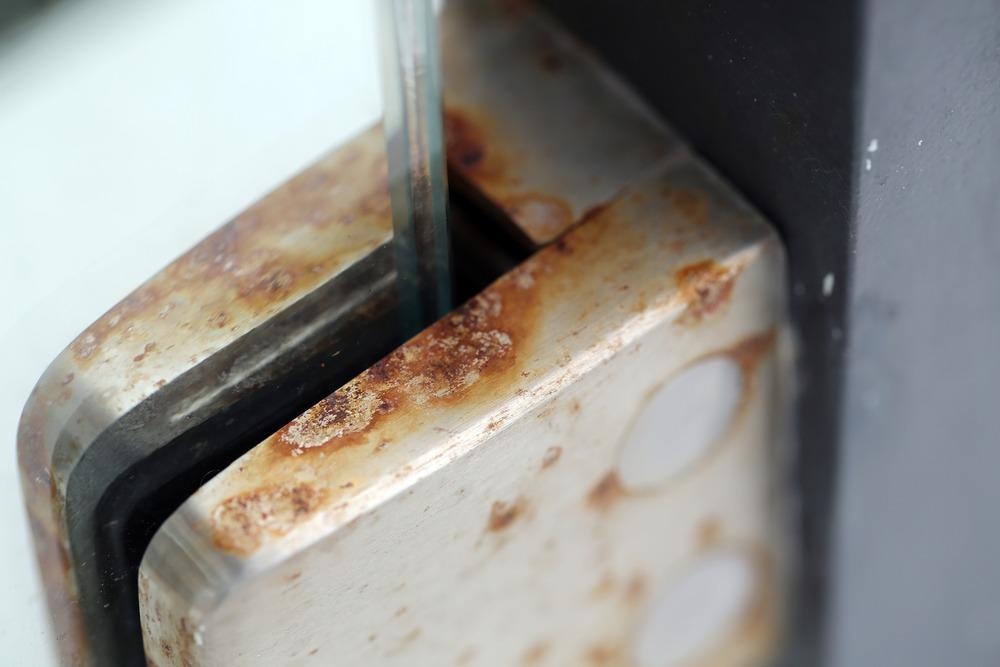In order to better understand the corrosion behaviors of specific alloys, a recent study presented in the Journal of Materials Science & Technology aimed to explore the impact of an alloy’s microstructure on its corrosion behavior.

Study: Tuning the microstructure for superb corrosion resistance in eutectic high entropy alloy, Image Credit: Thomas Barrat/Shutterstock.com
Structural materials are key to a wide range of engineering applications. These are central to the integrity of innumerable structures, industrial facilities, and infrastructure.
Failure of structural materials can cause huge loss of life, financial loss, and possibly legal penalties. One of the primary causes of structural failure is the corrosion of structural materials, a particular issue with conventional alloys such as stainless steel, titanium alloys, and nickel alloys.
Beyond their use in structural applications, alloys with high corrosion resistance are commonly employed in health applications, chemical processing, energy, oil, and gas production.
Work to better understand and characterize the underlying mechanisms that result in corrosion has led to the development of passivation methods. Passivation involves the formation of protective films which help improve alloys’ corrosion resistance. Other methods see the alloying of corrosion-resistant elements in conventional alloys in order to achieve passivation.
The refinement of a metal’s microstructural size – for example, its grain or phase size – is known to help reduce the motion of flow defects, in turn enhancing its strength.
Refining a microstructure is also known to increase the number of phase/grain boundaries that exhibit higher chemical levels of chemical activity, thereby boosting surface electron activities that can affect alloy passivation and potentially improve its corrosion resistance by forming protective oxides.
The study published in the Journal of Material Science and Technology aimed to investigate the potential finetuning of corrosion resistance in high entropy alloys (HEAs) or multi-principal element alloys (MPEAs).
These alloys are distinctive from conventional alloys in that they do not include a unique base element, instead typically comprising of five or more principal elements. Depending on the properties of these constituent principal elements, HEAs may present enhanced strength, wear resistance, ductility, and corrosion resistance.
The researchers sought to evaluate the potential for microstructural refinement and coarsening to optimize the corrosion resistance of a eutectic high entropy alloy (EHEA).
The chemical composition of this EHEA was reported to be FeCrNiCoNb0.5 (in atomic %), exhibiting excellent corrosion resistance when its eutectic structure is approximately 120 nm in size. An alloy’s corrosion resistance is generally understood to correlate with the ratio of corrosion-resistant elements to other elements in its oxide film.
High entropy alloys - by Professor Brian Cantor
Video Credit: bhadeshia123/Youtube.com
Cr, Co, and Ni are known to be corrosion resistant, meaning that the high corrosion resistance of the alloy was the result of the high atomic ratio of (Cr+Ni+Co) / (Fe+Mn) in its oxide film.
The researchers used an SEM to characterize the EHEA’s microstructure and chemical composition before annealing a series of samples at varying temperatures in order to produce varying microstructural properties.
A series of electrochemical tests were then performed in order to evaluate corrosion resistance, as well as compositional analysis of both the samples’ surface morphologies and passivation films.
The study’s results confirmed that the EHEA exhibited improved corrosion resistance following microstructure refinement, but it was important to understand the mechanisms which were the foundations of this corrosion resistance in order to effectively optimize this.
Overall, a refined eutectic structure in the EHEA was found to lead to improved transpassivation potential and a lower corrosion current density versus a coarsened eutectic structure. This was deemed the result of the formation of a robust passive film with reduced levels of Cl absorption.
The study aimed to better understand the underlying physical mechanism which impacts microstructure size. This would enable the design of EHEAs with optimized and balanced mechanical and corrosion properties, therefore improving their integrity and safety when used in key projects.
The research offers the potential to design robust, corrosion-resistant alloys that are chemically complex and appliable in a wide range of challenging environments.
Disclaimer: The views expressed here are those of the author expressed in their private capacity and do not necessarily represent the views of AZoM.com Limited T/A AZoNetwork the owner and operator of this website. This disclaimer forms part of the Terms and conditions of use of this website.
Source:
S. Shuang, Q. Yu, X. Gao, Q.F. He, J.Y. Zhang, S.Q. Shi, Y. Yang, Tuning the microstructure for superb corrosion resistance in eutectic high entropy alloy, Journal of Materials Science & Technology, 2021, ISSN 1005-0302, https://www.sciencedirect.com/science/article/pii/S1005030221009373?via%3Dihub